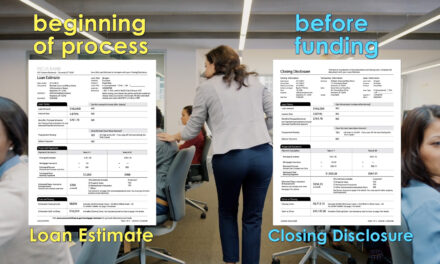Data required by the Home Mortgage Disclosure Act (HMDA) is now available for 2018, revealing some noteworthy trends in mortgage lending, buying and refinancing in California.
State- and federally-regulated banks and brokers who make decisions on whether or not to make a mortgage secured by any residential real estate — whether consumer or business and regardless of the number of units — are required by HMDA to compile and submit data on mortgages they originate to the Consumer Financial Protection Bureau (CFPB).
For the curious mind, HMDA data provides information on virtually all types of mortgages originated in California and its major metros over the course of a year, including:
- conventional mortgages;
- Federal Housing Administration (FHA)-insured mortgages;
- U.S. Department of Veterans Affairs (VA)-guaranteed mortgages; and
- U.S. Department of Agriculture (USDA)-guaranteed mortgages.
Related article:
Approximately 715,700 million mortgages were originated in California during 2018, making up 11.8% of the 6.1 million mortgages originated across the U.S. in the same year. This mortgage share is fairly consistent with the state’s population, which makes up 12.1% of the total U.S. population. As HMDA regulates larger mortgage lenders, these figures do not include some smaller lenders, including most carryback sellers, who are exempt from reporting.

Of the 715,700 mortgages originated in 2018, purchase loans made up the largest share. The total number of mortgages originated in California during 2018 were:
- 382,100 purchase mortgages;
- 297,400 refinance mortgages;
- 202,600 cash-out refinance mortgages; and
- 67,100 home improvement mortgages.
What is the difference between a refinance and a cash-out refinance?
The answer depends on the financial institution granting the mortgage product, as each lender has varying definitions and may file the mortgage with HMDA however it fits into their particular institution’s criteria. Typically, a financial institution defines a regular refinance (sometimes called a rate-and-term refinance) mortgage as one where the homeowner refinances their original mortgage, receiving no or very little of the proceeds as cash at closing. In these cases, the homeowner is refinancing so they can receive a better interest rate — not so they can have access to their home’s equity.
On the other hand, a cash-out refinance allows a homeowner to replace their old mortgage with a new one, receiving part of the mortgage proceeds as cash to complete home improvements, pay for college or pursue other opportunities. The cash represents the home equity gained under the previous mortgage. This is beneficial to the homeowner because the interest rate on a cash-out refinance is much lower than a personal loan. But it’s also very risky, because defaulting means foreclosure — the loss of the family home.
Roughly 442,000 homes sold in California during 2018, and just over 382,000 were purchased using a mortgage. Therefore, roughly 13.6% of purchases were completed using all-cash or seller financing arrangements.

The vast majority of mortgage originations — 85% of all originations, including purchases, refinances, cash-out refinances and improvement mortgages — are made with conventional mortgages. The remaining are insured or guaranteed by government-sponsored entities, including:
- FHA-insured mortgages, consisting of 10% of the total;
- VA-guaranteed mortgages, consisting of 5% of the total; and
- USDA-guaranteed mortgages, consisting of 0.2% of the total.
Related article:

Conventional mortgage applications were significantly more likely to be denied compared to other, government-sponsored mortgages. Here in California, mortgage applications were more likely to be denied across all mortgage types, especially for VA-guaranteed mortgages. The reason may have to do with the state’s generally high home values, which may lead some homebuyers to overextend by seeking higher loan-to-value (LTV)-ratios than lenders may find acceptable.
Demographics also play a role. For example, non-White applicants were more likely to see their mortgage application denied than White applicants. The ratio of mortgage origination to application denial in 2018 was:
- 1.9 for Black or African American applicants;
- 2.1 for Hispanic or Latino applicants;
- 2.7 for Asian applicants; and
- 3.1 for White applicants.
The reasons why White applicants were more successful in taking out mortgages than other races and ethnicities is not detailed in the data. But one of the reasons why the federal government collects HMDA data is to detect potential patterns of unlawful discrimination. [12 CFR §§1003 et seq.]
Other than straight-up discrimination, other reasons why White applicants are less likely to be denied than any other demographic group has a lot to do with poor or thin credit history (the second-most common reason for mortgage denial, preceded by high LTVs).
If you or your client suspects unlawful discrimination on behalf of a mortgage lender, contact either a counseling agency approved by the Department of Housing and Urban Development (HUD) or the Consumer Financial Protection Bureau (CFPB).
Related article:














